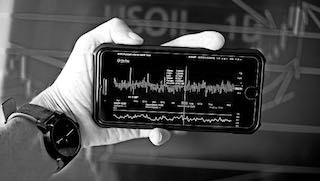May 20 (News On Japan) - Unlock the potential of your assets by mastering the art of risk management. From operational uncertainties to strategic challenges, this article delves into the realm of optimizing asset performance through effective risk mitigation strategies.
Explore the various types of risks, proactive measures for risk mitigation, and the role of technology in enhancing risk management practices. Learn more about strategic approaches to risk management by visiting https://immediate-bitwave.com/, where traders can connect with top educational experts for tailored guidance.
Identifying Risks in Asset Management
Exploring Different Types of Risks:
Risk management in asset performance entails a comprehensive understanding of various types of risks that can potentially impact an organization's objectives. These risks can manifest in diverse forms, ranging from operational uncertainties to financial instabilities, compliance obligations, and strategic challenges.
Operational risks, for instance, encompass the potential for disruptions or inefficiencies in day-to-day activities, stemming from internal processes, systems, or human errors. Financial risks, on the other hand, pertain to uncertainties associated with monetary investments, market fluctuations, credit exposures, and liquidity constraints.
In addition to operational and financial risks, organizations must also contend with compliance risks, which revolve around adherence to regulatory frameworks, industry standards, and legal obligations. Non-compliance can lead to severe penalties, reputational damage, and loss of stakeholder trust.
Moreover, strategic risks pose a distinct set of challenges, arising from shifts in market dynamics, competitive pressures, technological advancements, or unforeseen events. These risks necessitate proactive measures to anticipate, assess, and mitigate their potential impact on asset performance and organizational sustainability.
Conducting Risk Assessments:
Effective risk management hinges on the systematic evaluation of potential threats and vulnerabilities that could jeopardize asset performance. Conducting risk assessments involves a structured approach to identify, analyze, and prioritize risks based on their likelihood and potential impact.
Organizations employ various methodologies and tools to assess risks, including scenario analysis, probability assessments, historical data review, and expert judgment.
Furthermore, risk assessments entail engaging stakeholders across different levels of the organization to gain diverse perspectives and insights into potential risks.
This collaborative approach fosters a holistic understanding of the risk landscape and facilitates the development of targeted mitigation strategies.
Moreover, risk assessments should be dynamic and iterative processes, continuously evolving to adapt to changing internal and external factors that may influence asset performance and risk profiles.
Strategies for Effective Risk Management
Implementing Proactive Risk Mitigation Measures:
Implementing proactive risk mitigation measures is paramount for organizations aiming to safeguard asset performance and mitigate potential threats effectively.
This proactive approach involves anticipating potential risks, rather than merely reacting to them after they occur. One key strategy is the adoption of predictive maintenance techniques, which leverage data analytics and machine learning algorithms to forecast equipment failures and schedule maintenance activities proactively.
Furthermore, continuous monitoring and surveillance systems play a crucial role in early risk detection and mitigation. These systems utilize sensors, IoT devices, and real-time analytics to monitor asset health, performance metrics, and environmental conditions.
By leveraging these technologies, organizations can detect anomalies or deviations from normal operating parameters, enabling timely intervention and preventive actions to mitigate potential risks.
Integrating Technology for Risk Management:
Integrating technology into risk management practices enhances organizations' capabilities to identify, assess, and mitigate potential threats to asset performance.
IoT (Internet of Things) and big data analytics play a pivotal role in this regard, enabling real-time data collection, analysis, and insights generation from interconnected devices and sensors. By harnessing IoT technologies, organizations can gain visibility into asset health, operational status, and performance metrics, facilitating proactive risk management and decision-making.
Moreover, the adoption of artificial intelligence (AI) and machine learning algorithms enhances risk assessment and prediction capabilities. These advanced technologies can analyze vast amounts of data to identify patterns, trends, and anomalies indicative of potential risks.
Furthermore, cloud computing solutions offer scalability, flexibility, and accessibility, enabling organizations to centralize data storage, collaboration, and analysis for effective risk management.
By leveraging cloud-based risk management platforms, organizations can streamline data integration, automate workflows, and enhance collaboration among stakeholders, facilitating timely and informed decision-making processes.
Cultivating a Risk-Aware Culture:
Cultivating a risk-aware culture is essential for fostering organizational resilience and empowering employees to identify, assess, and mitigate potential risks proactively.
This cultural shift entails instilling a mindset of risk awareness and accountability across all levels of the organization, from frontline employees to senior management.
Moreover, incentivizing risk-aware behavior and decision-making encourages employees to actively contribute to risk identification and mitigation efforts. Recognizing and rewarding individuals and teams for demonstrating proactive risk management initiatives reinforces the organization's commitment to fostering a risk-aware culture and drives continuous improvement in risk management practices.
Conclusion
In today's dynamic business landscape, mastering risk management is paramount for maximizing asset performance. By implementing proactive risk mitigation measures and leveraging technology-driven solutions, organizations can navigate uncertainties with confidence. Cultivating a risk-aware culture fosters resilience and empowers teams to drive sustainable growth. Embrace the strategic approach outlined in this article to unlock the full potential of your assets and achieve long-term success.














